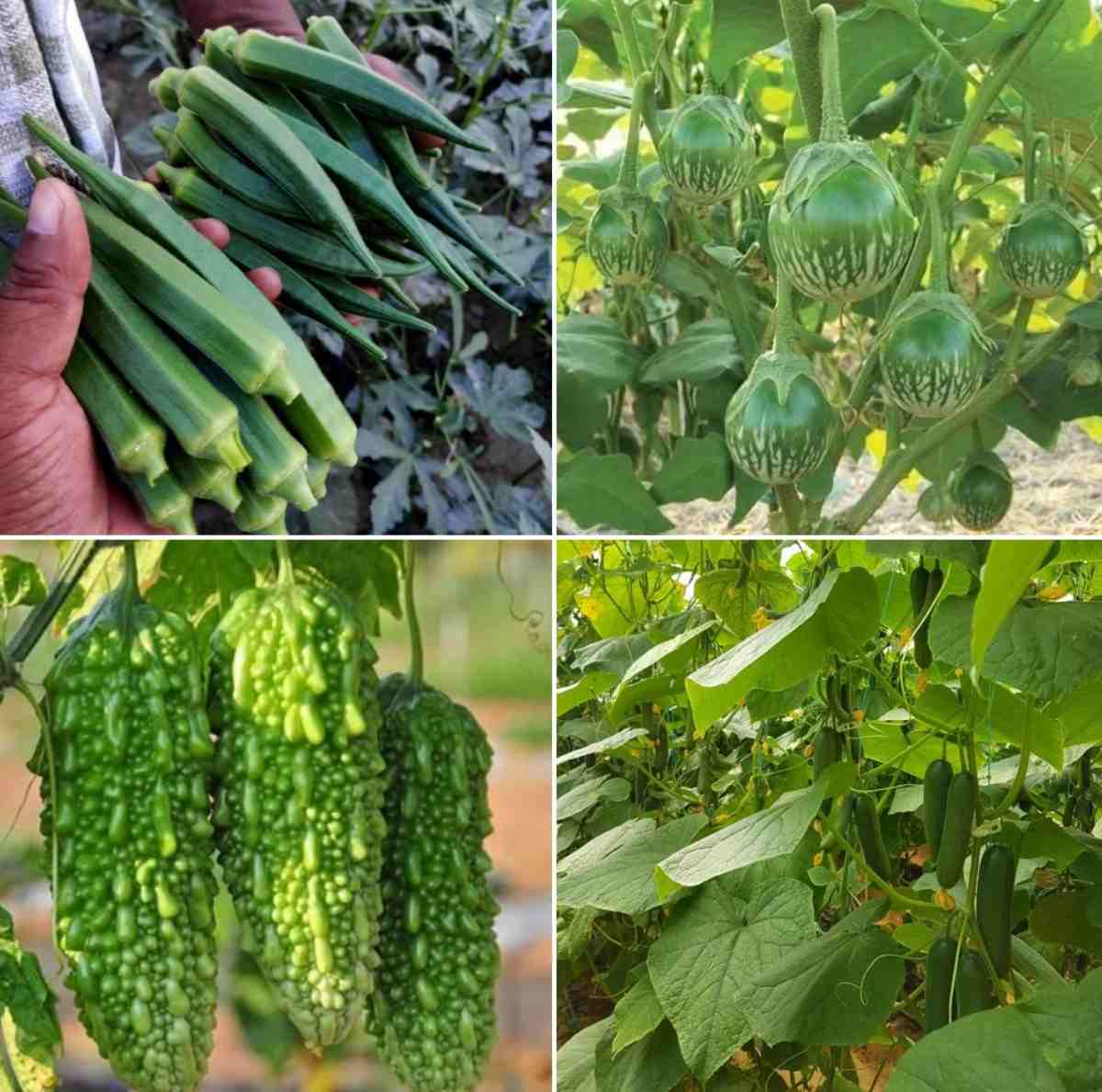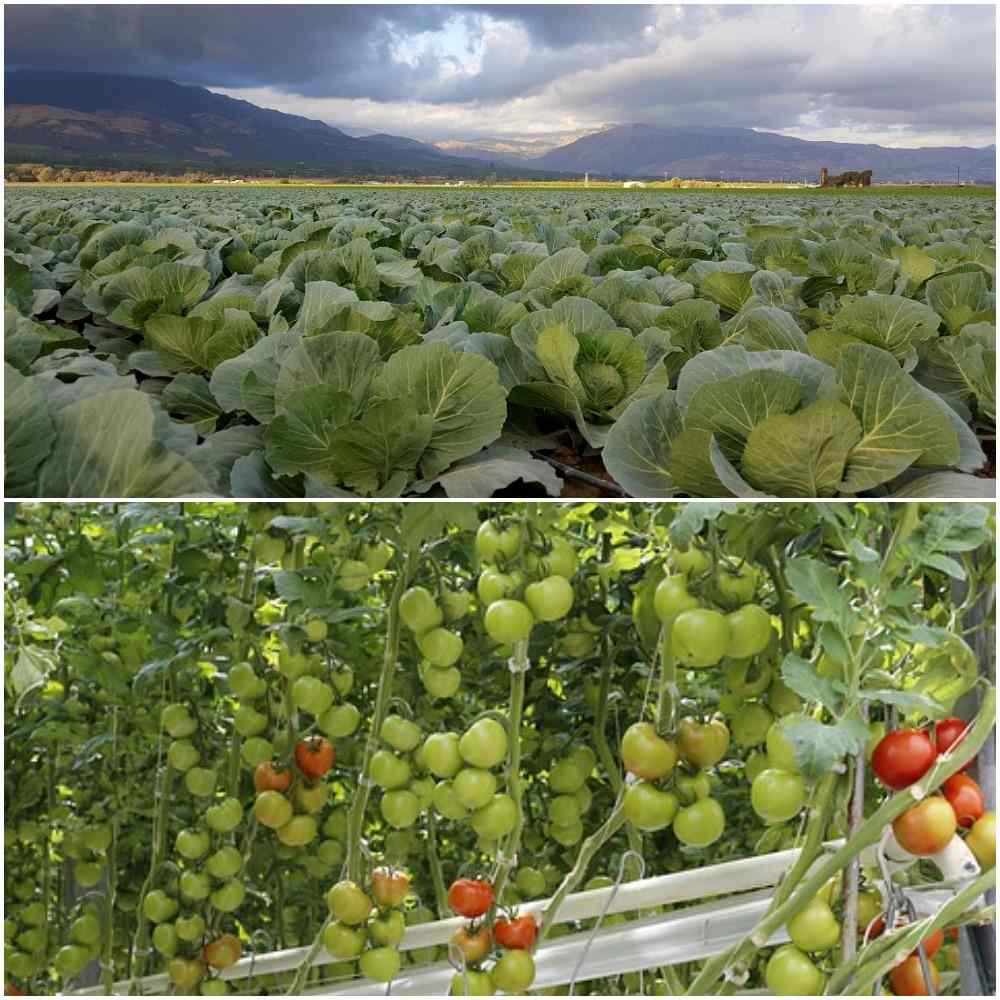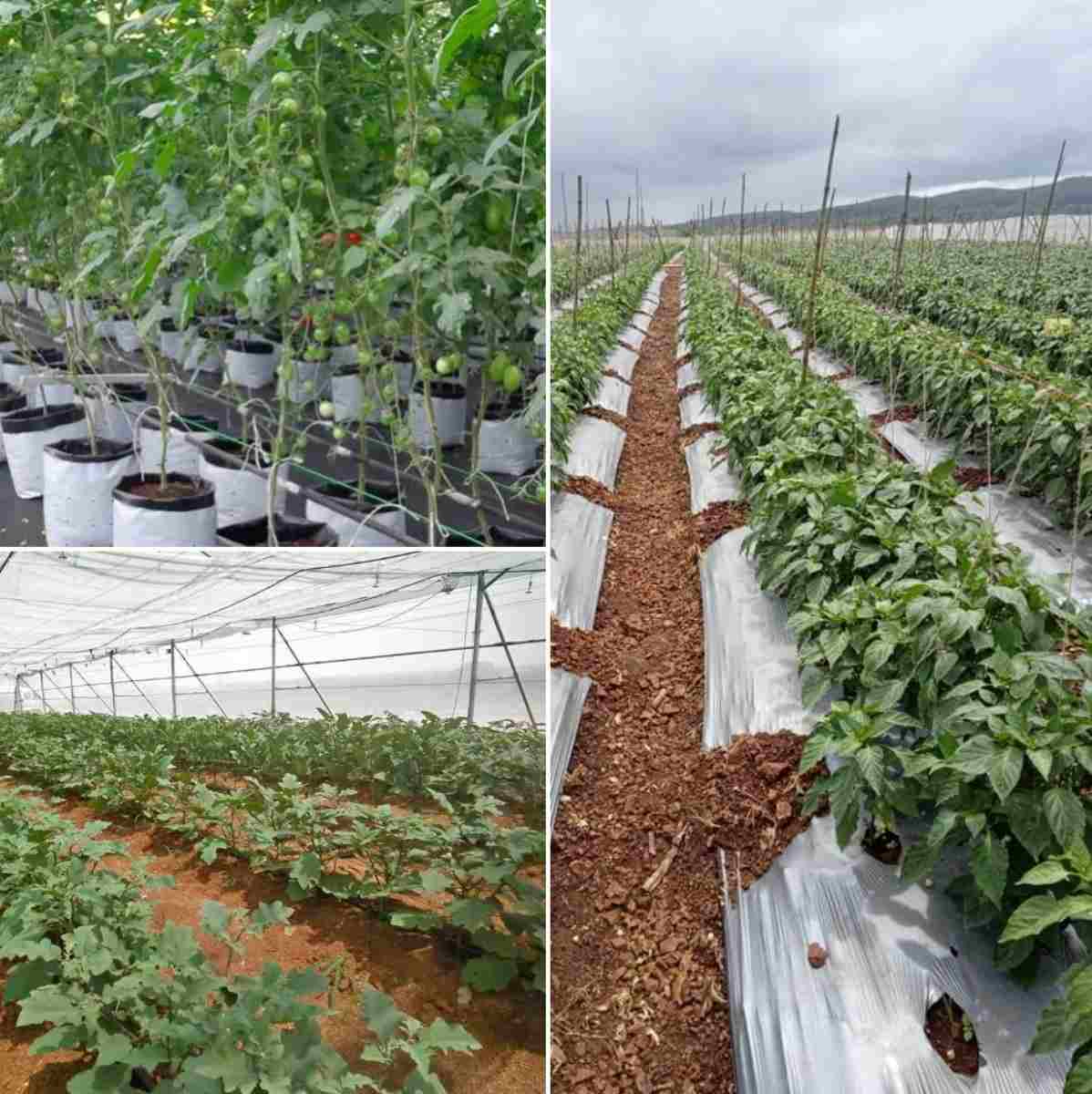Introduction to vegetable farming business plan
Vegetables are very important sources of vitamins, minerals, and antioxidants providing human health benefits. Vegetable farming business is a profitable business and this not only for a big farmer. It is also profitable for small and marginal farmers. A small-scale vegetable farming has the earning potential throughout the year. If you are planning for commercial vegetable production for maximum profits, you must have a proper vegetable farming business plan.
A step by step guide to vegetable farming business plan
Growing vegetable crops is the perfect way to turn your gardening skills and knowledge into extra income. Business planning is the key to success when you’re ready to invest in starting a vegetable-production business. Poor management and lack of planning are, in many cases, the main causes of business failure. Vegetable farming is a type of crop production intended mainly for human consumption of the crop’s edible parts such as the shoot, leaves, fruits, and roots. According to the consuming part of the crop, vegetables are mainly divided into the following groups;
- Leafy vegetables (lettuce, cabbage, spinach)
- Fruit vegetables (pepper, cucumber, tomato)
- Root vegetables (carrot, radish, sweet potato)
- Bulb vegetables (garlic, onion, fennel)
- Flower vegetables (artichoke, cauliflower, broccoli)
Things to consider in starting a vegetable farming business

Vegetable farming business demands proper planning, investment, adequate knowledge, and marketing. However, here we have discussed some of the main essentials;
- First of all, a solid vegetable farming business plan is very important.
- In starting, figure out how must land area you have for vegetable farming.
- According to the agro-climatic condition choose the vegetable for farming.
- You must consider the local market because vegetables are hugely perishable items.
- Also, cultivate the scope of export.
- Select the right species.
- Furthermore, you must arrange the proper irrigation for your vegetable farm.
- Plan for harvesting storage.
- Calculate the entire working capital cost.
- Finally, you must arrange the required finance.
Production factors and techniques for vegetable farming business
Vegetable farming business requires attention to all production operations, including insect, disease, and weed control and efficient marketing. The kind of vegetable grown is determined by consumer demands, which can be defined in terms of vegetable variety, size, tenderness, flavor, and type of pack. Though, effective management involves the adoption of methods resulting in a steady flow of the desired amount of produce over the whole of the natural growing season of the vegetable crop. Many vegetable plants can be grown throughout the year in some climates, while yield per acre for a given kind of vegetable varies based on the growing season and region where the crop is produced.
Climate – Climate involves the temperature level, moisture, daylight, and wind conditions of a specific region. Climatic factors strongly affect all stages and processes of vegetable plant growth
Temperature – Temperature requirements are mainly based on the minimum, optimum, and maximum temperatures during both day and night throughout plant growth.
Moisture – The amount and annual distribution of rainfall in a region, particularly during certain periods of development, affects local crops.
Daylight – Light is the source of energy for vegetable plants. The response of plants to light is mainly dependent upon light intensity, quality, and daily duration.
Site – The choice of a site involves such factors as soil and climatic regions.
Soil preparation and management – Soil preparation and management for vegetable growing involves many of the usual operations required for other crops. Good drainage is important for early vegetables because of wet soil retards development.
Propagation – Propagation of vegetable plants, involving the formation and development of new individuals in the establishment of new plantings, is accomplished by the use of either seeds or the vegetative parts of plants.
Planting – Vegetable crops are planted in the field where they are to grow to maturity. A few kinds are commonly started in a seedbed, established in the greenhouse or the open, and transplanted as seedlings.
Cultivation – Vegetable cultivation refers to stirring the soil between rows of vegetable plants.
Irrigation – Vegetable farming requires irrigation in arid and semi-arid regions, and irrigation is frequently used as insurance against drought in more humid regions.
Disease and insect control – The vegetable production of satisfactory crops requires rigorous disease- and insect-control measures. Crop yield can be lowered by disease or insect attack, and when plants are attacked at an early stage of growth the entire crop may be lost. Reduction in the quality of crops may also be caused by diseases and insects.
Harvesting – The development stage of vegetables when harvested affects the quality of the product reaching the consumer.
Marketing strategies used in a small vegetable farming business plan
Marketing strategy to the small vegetable growing farmer can be;
- Collective approaches, no individual side marketing
- Growing quality vegetables.
- Collection through cooperative or committee.
- Standardization of the product.
- Sale in the outlet by cooperative or Malls.
- Welfare strategy for farmers in profit distribution.
- Government subsidy to the collective approach.
Importance of vegetable production
In case if you miss this: Growing Medicinal Plants Hydroponically.

Vegetables are vital to the general good health of human beings, and providing necessary vitamins and minerals, and reducing risk from dangerous diseases and other medical conditions. First, of course, you would need a piece of land to start vegetable farming and try at least an acre for commercial vegetable growing. Then you would require equipment, which you can buy, lease or borrow, such as a tractor, tiller, plow, disc, cultivator, and planter. Lower your production cost as much as possible by spending on equipment only when required. Unnecessary expenses on equipment can eat away potential profits.
Vegetable production provides a promising economic opportunity for reducing rural poverty and unemployment in developing countries and is the main component of farm diversification strategies. Vegetables are mankind’s most affordable source of vitamins and minerals required for good health.
Importance of vegetable production is;
- Importance in human nutrition
- Vegetables are a very important source of farm income
- Vegetables have aesthetic value
- Vegetable production for medicinal purpose
- Roll of vegetables in the national economy
- Flexibility in plant production program-unlike the fruits with vegetables the production program can be adjusted and changed for better profits according to needs. With fruits, it is a difficult time taking and expensive to change the production program if it turns out to be unprofitable.
Factors that determine successful vegetable production
Whether the growth of vegetables is intended for fresh consumption, processing, and seed production, it can be a profitable vegetable business. However, there are a few factors that can influence the profitability of vegetable production from its early beginnings;
- Seed quality; the sowing of quality, clean, labeled, graded to size, viable, and healthy seed can make all the difference between success and failure in vegetable farming.
- Optimal time of sowing and planting; depends on the climate and environmental conditions of the specific area, as well as requirements of each crop.
- Method of planting; the secret to successful vegetable farming lies in the managing of optimal plant requirements, by combining the production of transplants in the greenhouses with planting in the field.
- Finally, considering effective farm management is the first step in creating profitable vegetable production. In essence, farming of these colorful plants can be a profitable business.
- Some plants have high labor requirements to grow. Before selecting a vegetable to raise, know first the extent at which some plants need tending. Then, determine whether you have the time to invest to grow and market it. For example, if you expect to be unable to get your products sold immediately, avoid easily perishable crops such as asparagus, sweet corn, peas and grow potatoes and onions instead.
- Some plants are difficult to grow and need special attention from the farmer for optimum results. Your choice of the crop must consider whether you have the knowledge and experience in growing such crops and whether you are willing to learn from available resources. Also, some plants would need special equipment. Select those you won’t need to buy the equipment to grow.
Production techniques of quality vegetables
You should not miss this: Chilli Seed Germination, Time, Temperature, Procedure.

The quality of vegetables mainly depends on the horticultural production systems, environmental factors, and management practices used. Climatic conditions such as temperature and light intensity have a strong influence on the nutritional quality of vegetables. Hydroponic cultivation technique ensures the production of quality vegetables, and in this culture system, both plant nutrition and environmental conditions are artificially managed according to the plant need. Growing quality vegetables is easier and safer in hydroponic compared to conventional soil culture. The advantages of this system are that plant roots are visible and the root zone environment can be easily monitored. In this system of cultivation, the yield of the vegetable crop can be maximized through the efficient use of all resources, and it is believed to be the intensive form of agricultural enterprises for commercial production of greenhouse vegetable plants.
Soilless culture of vegetables uses inert organic or inorganic substrate through the hydroponic nutrient application. This culture has been reported to practice in the greenhouse as an alternative to conventional filed cultivation of many high-value vegetable crops. Under these protected cultivation systems, weather factors, the amount and composition of nutrient solution, and the growing medium can be managed successfully. Therefore, the quality of vegetable crops grown through soilless culture improves significantly compared to conventional soil culture. Many researchers found better taste, uniformity, color, texture, and higher nutritional value in fruits grown in soilless culture than in soil cultivation methods.
Production plan of a vegetable farming business
Once you have a clear idea of what you want your vegetable farm business to look like, what you want to produce, and where you will sell your product, you need to establish a production plan. Some factors to consider are listed below;
Capital needs – Identify the investment and cash operating needs and how much you will need to borrow.
Infrastructure and equipment – Identify what equipment you need for the vegetable crops you will produce. Also, depending on the packaging and also handling requirements identify what type of infrastructure will be needed.
Management – Identify the production, management, and marketing skills essential to make your enterprise successful. If you do not have those skills, identify ways to acquire them, which can include hiring additional labor.
Planting and harvesting schedule – Plan the best timing for planting and harvesting your vegetable crops, based on plant varieties and availability of labor. Remember to plan planting dates based on your harvest schedule (e.g., customer demand).
Post-harvest and sanitation – Post-harvesting needs (sanitation, handling, and cooling) are very important aspects that need careful thought. Cooling is essential to delay produce spoilage and keep it fresh. When the product is not sold and delivered immediately after harvest, a cold storage option can be needed.
Enterprise analysis – Keep good plant production and financial records to help you make good decisions in the future. Use records to identify problems that need to be solved and to identify what practices and crops are profitable for your business.
Some of the important high yield vegetable crops
List of high yield vegetable crops can be given below;
Cucumbers – In an acre area, around 12000 cucumber plants are planted (3 plants per square meter) and each plant yields an average of about 5 to 7 kg per cycle. This will yield about 8,400 to 10,500 plants per acre.
Squash – In general, each squash plant produces about 5 to 25 pounds of yellow squash during the growing season. A 10-foot row of yellow squash averages about 20 to 80 pounds of squash.
Beans – The average yield is about 100 to 120 quintals of green pods per hectare can be expected.
Tomatoes – The average tomato crop yield per acre in India is 10 tonnes although the yield varies from 15 to 20 tonnes per acre in case of irrigated crops.
Peanuts – Grown mainly through age-old farming techniques, peanut yield in India is about 700 to 900 kg per hectares.
Potatoes – During the first year of cultivating potatoes, a good yield can be about 10 tons per acre. Experienced farmers after years of practice can achieve yields 16 to 28 tons per acre.
Peppers – The yield per acre of pepper is about 0.39 tonnes per hectare. This indicates a plant population of 10,250 plants per acre, thus the average yield per plant is 3.6 pounds.
Beetroot – The beetroot crop yields about 20–25 tonnes/hectare in 120 days.
Radishes – It yields about 200 to 250 quintals fresh radish per hectare.
Lettuce – The average yield of lettuce is about 80 to 120 quintals per hectare.
The conclusion of a vegetable farming business plan
The above information may also be used for Polyhouse vegetable farming, Greenhouse vegetable farming, and even vegetable farming at home. In case if you are interested in this: How to Make Money from a Vegetable Farming.
Thanks for ur information it’s very useful to me..
insightful information for beginners like me.
How can I get this information handy for referral purposes during my start up farming carrer
I would like to set a agriculture business in 100 Acre land in Gujarat. I need prepare a business plan which should include crop name, it production detail per year and estimed income. I also need to have deails of other related investmenet like equipments, storage facility, labour cost , water cost , fertiliser cost etc
I want to be a farming business man
The content is important for a small scale farmer who is not in a position to get extension services from agricultural officers. It help me acquire some knowledge in writing a proposal for my vegetable project.
Good information for me to start my vegetable project to feed my country
I would like to receive more information through my email as a guide for my project
Thank you
Educative
Thanks for the Info,
I am planning to start the farming can I get more info about the farming with Advance Technology how we built the prototype model first.
This is a great insight into vegetable farming.
I wanna develop a business plan for vegetable production on campus.
How can I start and what kind of marketing strategy plan do I have to implement
Thank you for the information. Also I would like to receive more information.